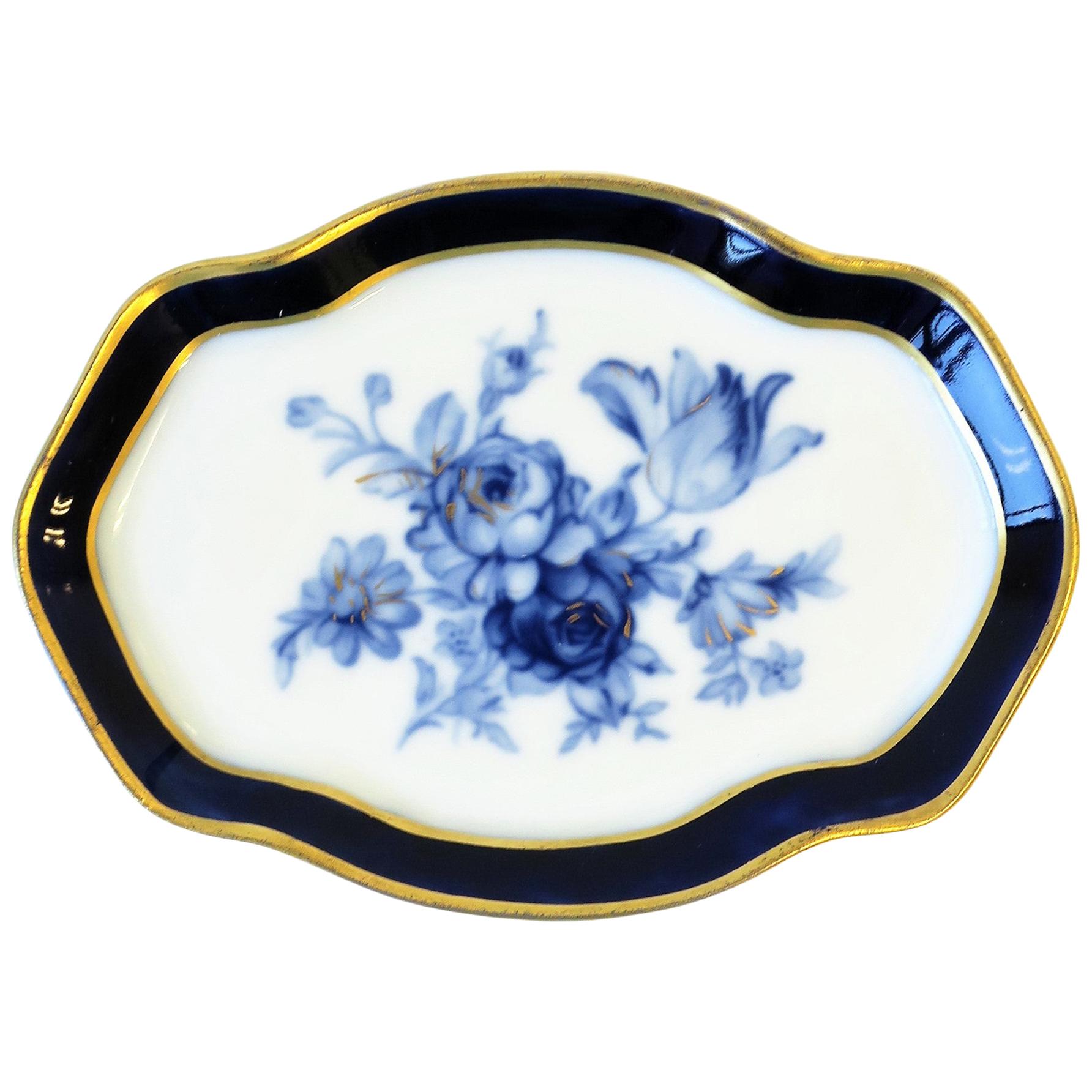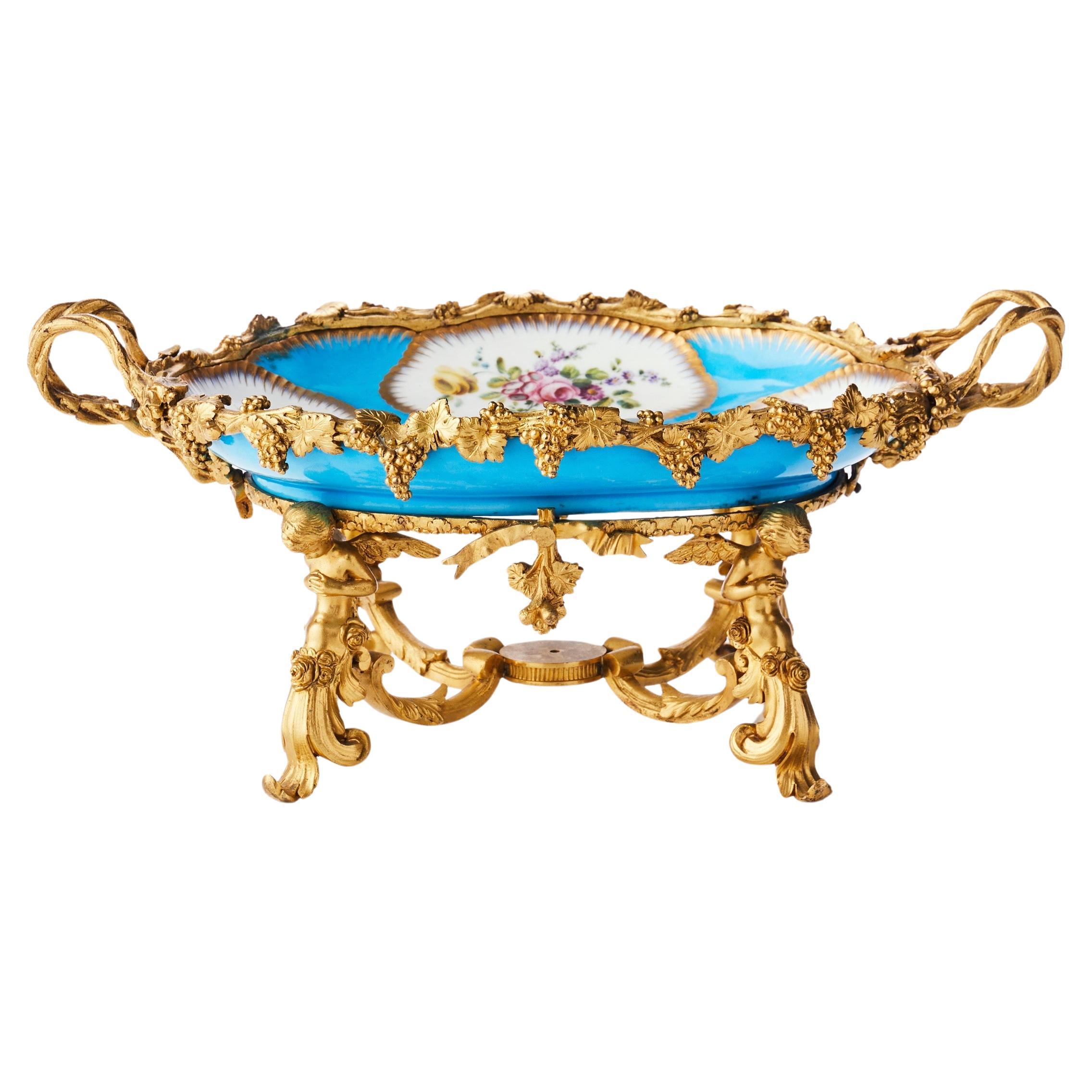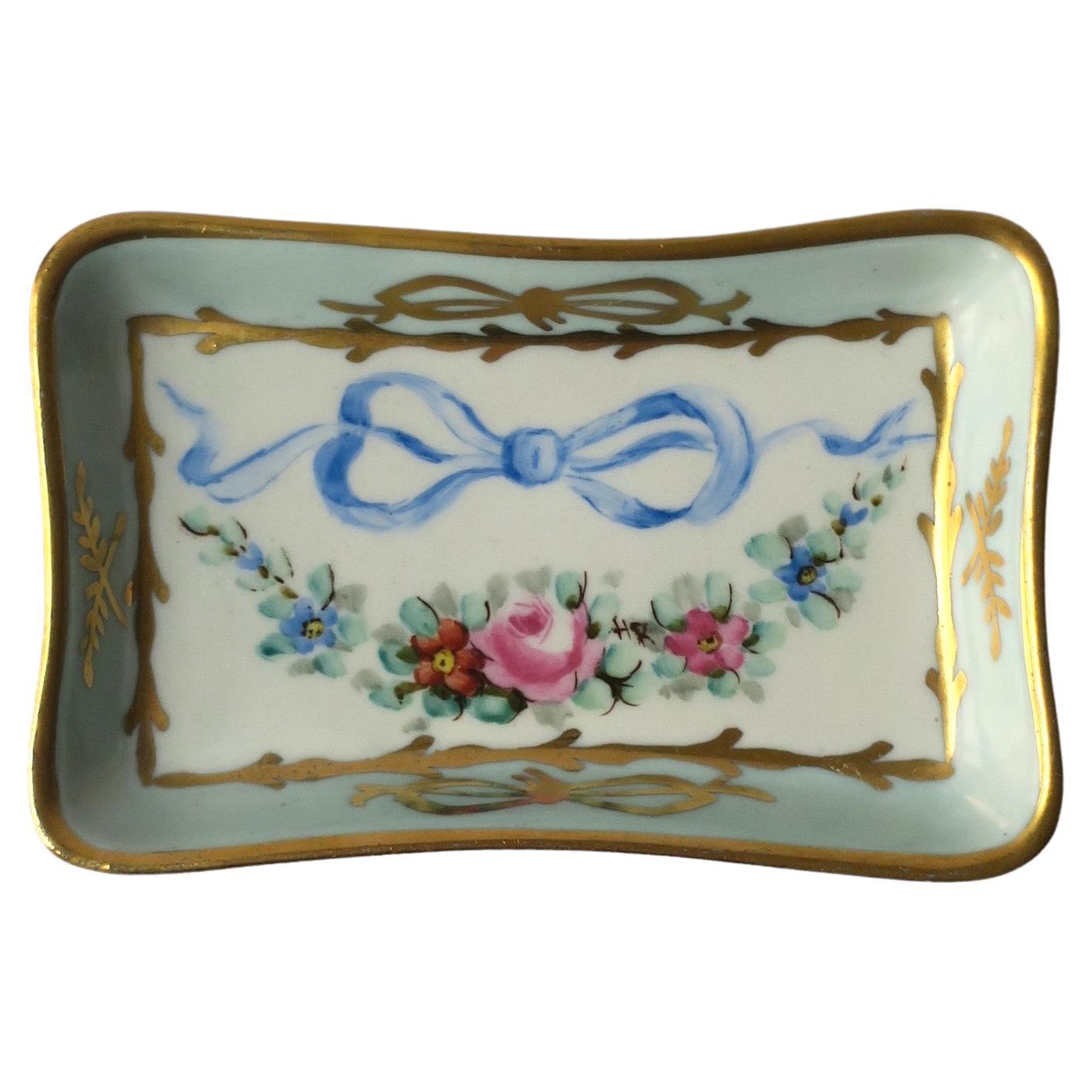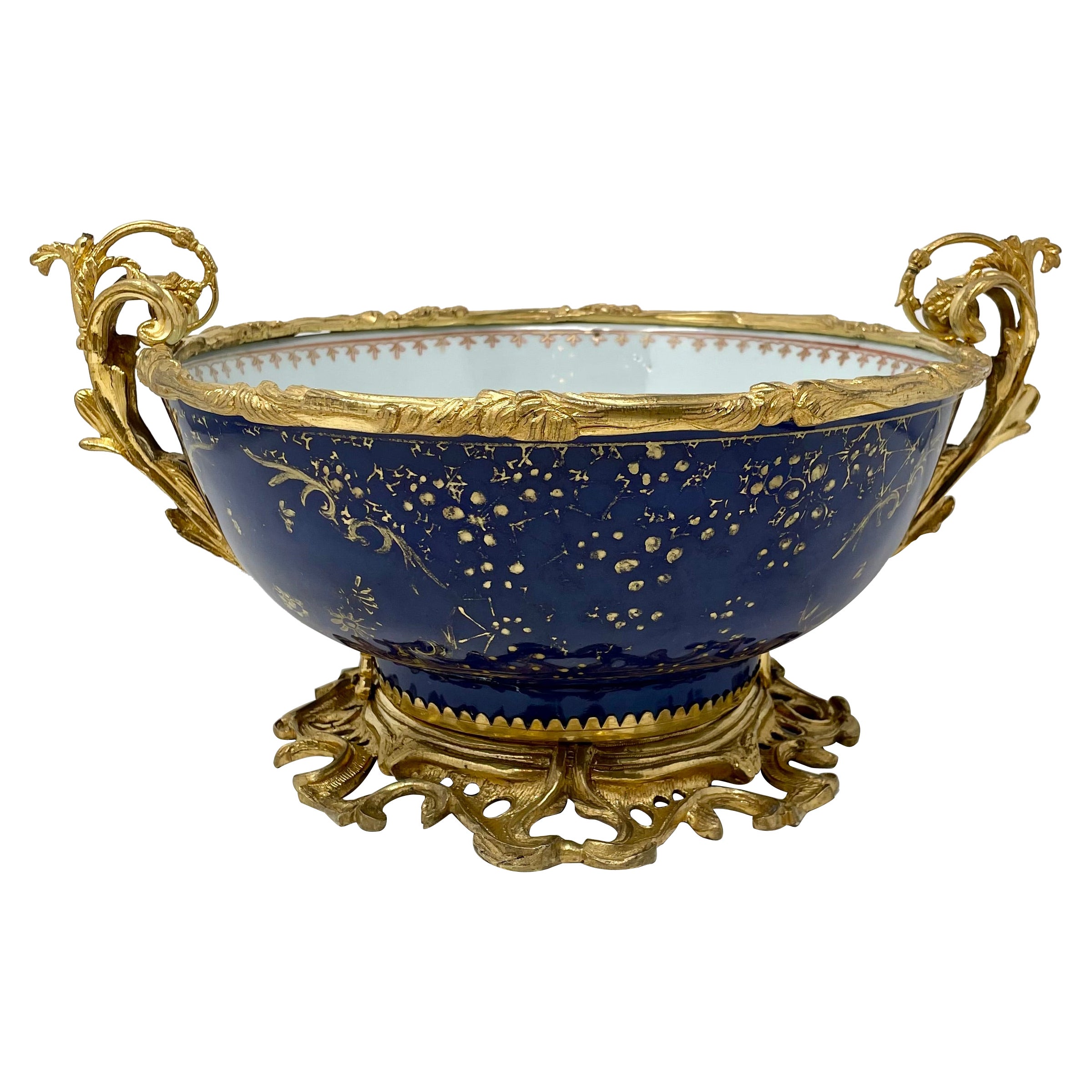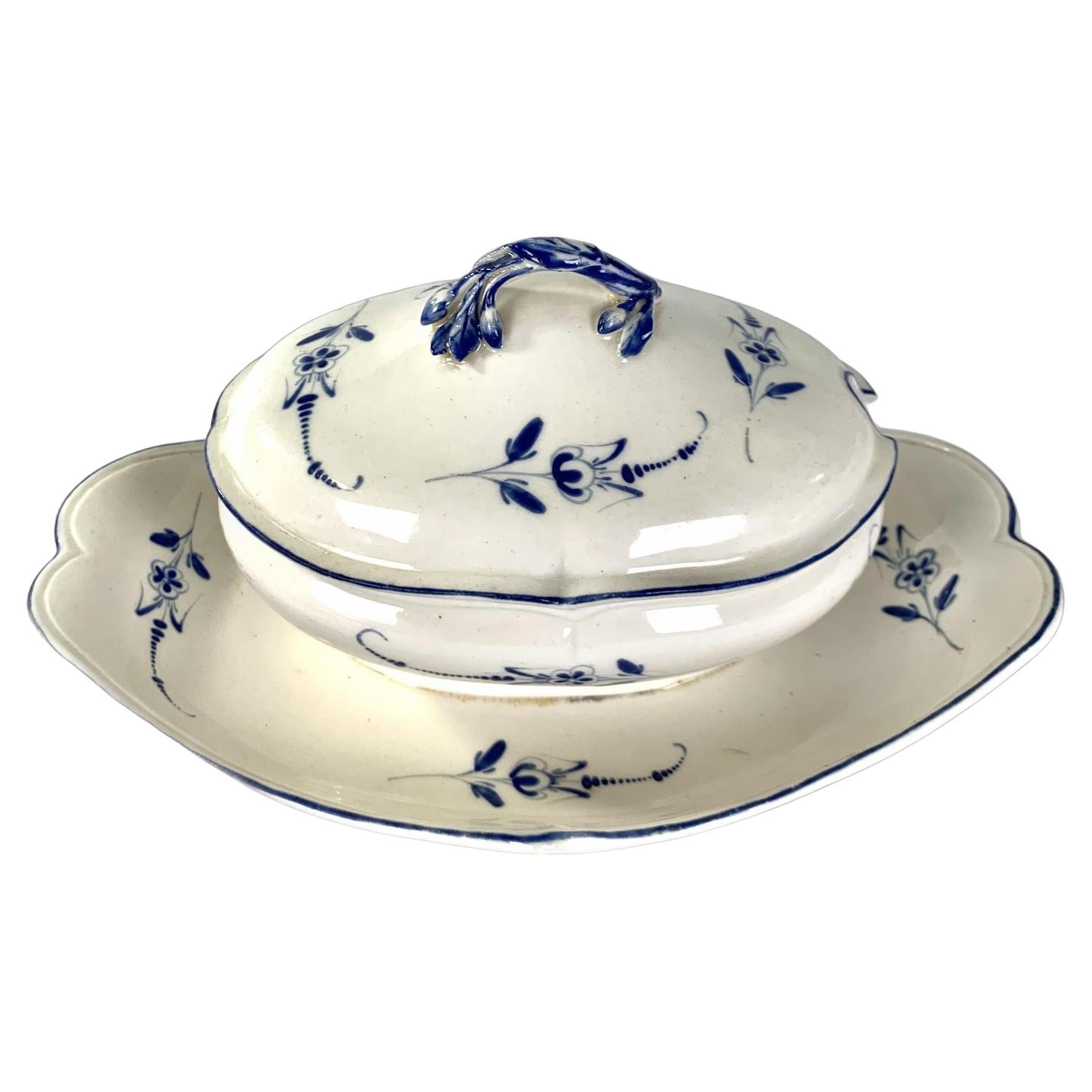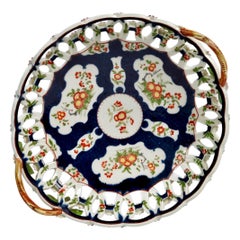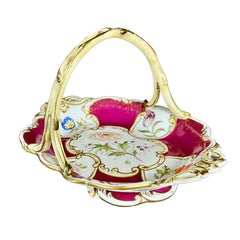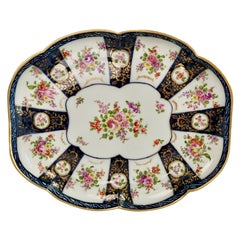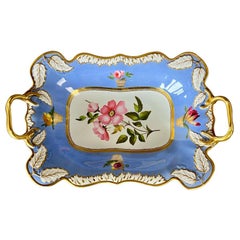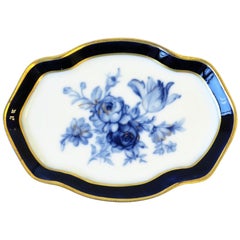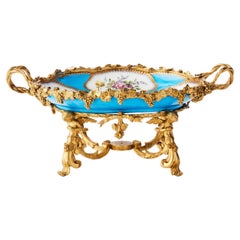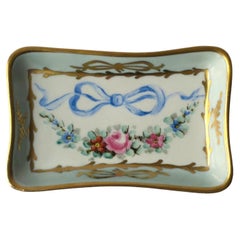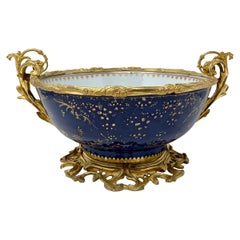Items Similar to Samuel Alcock Porcelain Basket, French Blue, Landscape, Rococo Revival ca 1830
Want more images or videos?
Request additional images or videos from the seller
1 of 12
Samuel Alcock Porcelain Basket, French Blue, Landscape, Rococo Revival ca 1830
$580
$72520% Off
£440.33
£550.4120% Off
€503.64
€629.5520% Off
CA$810.34
CA$1,012.9320% Off
A$901.28
A$1,126.6020% Off
CHF 470.62
CHF 588.2820% Off
MX$10,967.61
MX$13,709.5220% Off
NOK 6,010.54
NOK 7,513.1720% Off
SEK 5,636.82
SEK 7,046.0320% Off
DKK 3,758.85
DKK 4,698.5620% Off
Shipping
Retrieving quote...The 1stDibs Promise:
Authenticity Guarantee,
Money-Back Guarantee,
24-Hour Cancellation
About the Item
A small porcelain basket in Rococo Revival style with scroll and shell moulded borders, pierced handles on both ends, a pale yellow twig handle, a French blue ground with pale yellow foliage and a fine landscape painting in the centre.
This would make a perfect gift as a trinket dish - these baskets were often used to collect visting cards from guests.
Pattern unknown
Year: ca 1830
Size: 17.5cm (6.8”) long, 9cm (3.5”) tall
Condition: excellent
The Samuel Alcock factory was operative in Staffordshire between 1822 and 1856, after which it was bought by Sir James Duke and Nephews. The factory started as a partnership between the young Samuel Alcock and the older Ralph Stevenson, who provided the factory and capital. Alcock quickly took the factory to great heights, building one of the biggest factories of its time. Alcock jumped on the new Rococo Revival fashion and served a huge new middle class market. The reason we now don't hear much about Samuel Alcock porcelain is that much of it has been mis-identified over the years and attributed to Coalport, Ridgway, Rockingham or others; Alcock did not mark any of his porcelain save a few rare pieces, and the numbering system is difficult to understand. However, the wares are still wide spread and many are of great quality.
This basket is part of the Murray Pollinger Collection of Samuel Alcock Porcelain.
Murray Pollinger was a passionate collector of Samuel Alcock porcelain. He was known as a true gentleman, impeccably dressed, always kind and modest - even some of his porcelain collecting friends had no idea about the size and importance of his collection. From the mid 1980s until shortly before his death in 2022 he collected many thousands of pieces and painstakingly catalogued them. He also went on trips to Staffordshire to discover the history of Samuel Alcock from whatever little documentation has been preserved. Through his painstaking work, Pollinger was able to make sense of the pattern numbering system that was used, and this was a huge step forward in identifying and understanding the porcelain. A website with the results of his research will be made availabe over the course of 2023. While he sold off about half of his collection in 2016, the remaining half is now made available to a new generation of collectors.
Antique British porcelain is never perfect. Kilns were fired on coal in the 1800s, and this meant that china from that period can have some firing specks from flying particles. British makers were also known for their experimentation, and sometimes this resulted in technically imperfect results. Due to the shrinkage in the kiln, items can have small firing lines or develop crazing over time, which should not be seen as damage but as an imperfection of the maker's recipes, probably unknown at the time of making. Items have often been used for many years and can have normal signs of wear, and gilt can have signs of slight disintegration even if never handled. I will reflect any damage, repairs, obvious stress marks, crazing or heavy wear in the item description but some minor scratches, nicks, stains and gilt disintegration can be normal for vintage items and need to be taken into account.
There is widespread confusion on the internet about the difference between chips and nicks, or hairlines and cracks. I will reflect any damage as truthfully as I can, i.e. a nick is a tiny bit of damage smaller than 1mm and a chip is something you can easily see with the eye; a glazing line is a break in the glazing only; hairline is extremely tight and/or superficial and not picked up by the finger; and a crack is obvious both to the eye and the finger. Etcetera - I try to be as accurate as I can and please feel free to ask questions or request more detailed pictures!
- Creator:Samuel Alcock & Co. (Maker)
- Dimensions:Height: 3.5 in (8.89 cm)Width: 6.8 in (17.28 cm)Depth: 5 in (12.7 cm)
- Style:Rococo Revival (Of the Period)
- Materials and Techniques:
- Place of Origin:
- Period:
- Date of Manufacture:circa 1830
- Condition:Wear consistent with age and use. in excellent condition.
- Seller Location:London, GB
- Reference Number:Seller: MP-ALC231stDibs: LU4805136708222
About the Seller
5.0
Gold Seller
Premium sellers maintaining a 4.3+ rating and 24-hour response times
Established in 2016
1stDibs seller since 2019
226 sales on 1stDibs
- ShippingRetrieving quote...Shipping from: London, United Kingdom
- Return Policy
Authenticity Guarantee
In the unlikely event there’s an issue with an item’s authenticity, contact us within 1 year for a full refund. DetailsMoney-Back Guarantee
If your item is not as described, is damaged in transit, or does not arrive, contact us within 7 days for a full refund. Details24-Hour Cancellation
You have a 24-hour grace period in which to reconsider your purchase, with no questions asked.Vetted Professional Sellers
Our world-class sellers must adhere to strict standards for service and quality, maintaining the integrity of our listings.Price-Match Guarantee
If you find that a seller listed the same item for a lower price elsewhere, we’ll match it.Trusted Global Delivery
Our best-in-class carrier network provides specialized shipping options worldwide, including custom delivery.More From This Seller
View AllWorcester Pierced Porcelain Basket, Blue Scale Japanese Kakiemon, circa 1765
By 1st Period Worcester Dr. Wall
Located in London, GB
This is a rare and beautiful porcelain basket made by Worcester circa 1765 in their 1st or "Dr Wall" period. These baskets were used for dinners or desserts to serve fruit or bread. The basket is decorated in the famous "blue scale" ground with very fine Japanese Kakiemon...
Category
Antique 1760s English George III Decorative Baskets
Materials
Porcelain
$1,220 Sale Price
20% Off
Free Shipping
Samuel Alcock Porcelain Basket, Rococo Revival, Maroon, Flower Reserves, ca 1835
By Samuel Alcock & Co.
Located in London, GB
A maroon ground basket in Rococo Revival style with pierced pale yellow ends, a twig handle and five flower reserves with single flowers.
Pattern 2/5610
Year: ca 1835
Size: 22.5cm (8.75”) long, 13cm (5”) tall
Condition: handle has been repaired, see last picture; some rubbing
This basket forms part of the Murray Pollinger Collection of Samuel Alcock Porcelain...
Category
Antique 1830s English Rococo Revival Decorative Baskets
Materials
Porcelain
$460 Sale Price
20% Off
Free Shipping
Edmé Samson Porcelain Cabaret Tray, Worcester Style Blue with Flowers, 19th C
By Royal Worcester, Edmé Samson
Located in London, GB
This is a beautiful cabaret tray made by Edmé Samson in Paris some time in the 19th century. The tray is in the 'blue scale' style that the Worcester fact...
Category
Antique 19th Century French Rococo Platters and Serveware
Materials
Porcelain
$1,000 Sale Price
20% Off
Samuel Alcock Footed Comport, Melted Snow, Periwinkle Lilac, Flowers, ca 1822
By Samuel Alcock & Co.
Located in London, GB
A footed rectangular central comport or centre piece, periwinkle / lilac ground with melted snow and holly leaf borders and flowers, a large pink wild rose painting...
Category
Antique 1820s English Regency Serving Bowls
Materials
Porcelain
$1,028 Sale Price
20% Off
Free Shipping
Worcester Chestnut Basket, Cover and Stand, Polychrome Flowers, 1770-1775
By 1st Period Worcester Dr. Wall
Located in London, GB
This is a very rare offer of a spectacular moulded and pierced chestnut basket, cover and stand, made by Worcester between 1770 and 1775 in their 1st or "Dr Wall" period. The set con...
Category
Antique 1770s English Rococo Porcelain
Materials
Porcelain
$2,200 Sale Price / set
20% Off
Samuel Alcock Porcelain Teapot, Blue, Gilt and Flowers, Rococo Revival ca 1837
By Samuel Alcock & Co.
Located in London, GB
A teapot with cover in the “rustic bean” shape, cobalt blue ground with gilt acanthus motif and finely painted flower posies on the belly of the teapot
Pattern 5782
Year: ca 1837
Si...
Category
Antique 1830s English Rococo Revival Tea Sets
Materials
Porcelain
$600 Sale Price
20% Off
Free Shipping
You May Also Like
French Blue and White Porcelain Jewelry Dish in the Rococo Style
Located in New York, NY
A beautiful French blue and white porcelain jewelry dish in the Rococo style, circa early 20th century, Limoges, France. Piece has a floral 'chintz' design of light and dark blue flo...
Category
Early 20th Century French Rococo Decorative Dishes and Vide-Poche
Materials
Porcelain
$380 Sale Price
20% Off
19th Century Ormolu Mounted Blue Celeste Sèvres Porcelain Bowl
By Manufacture Nationale de Sèvres
Located in Stockholm, SE
Ormolu-mounted blue celeste Sevres porcelain bowl center piece, probably second half of 19th century. Unusual mounting in rococo style with four winged putti supporting each corner o...
Category
Antique Late 19th Century French Rococo Decorative Bowls
Materials
Bronze
$1,821 Sale Price
20% Off
French Porcelain Blue and White Chintz Jewelry Dish
Located in New York, NY
A beautiful, small, French porcelain jewelry dish with hand-painted 'chintz' design, circa early-20th century, France. A great piece to hold jewelry (as d...
Category
Early 20th Century French Rococo Decorative Dishes and Vide-Poche
Materials
Porcelain
Antique 18th Century French Blue Porcelain Bowl with 19th Century Ormolu Mounts.
Located in New Orleans, LA
Rare Antique 18th Century French Blue & Gold Porcelain Bowl with 19th Century Ormolu Mounts.
Category
Antique 19th Century French Centerpieces
Materials
Ormolu
Antique Blue and White Mennecy Porcelain Tureen Mid-18th Century France Ca. 1750
By Mennecy Porcelain Manufactory 1
Located in Katonah, NY
This delightful 18th-century blue and white porcelain tureen was hand-painted at the Mennecy Porcelain factory in France circa 1750.
Loose flower sprigs painted in cobalt blue decora...
Category
Antique Mid-18th Century French Soup Tureens
Materials
Porcelain
A Lowestoft Porcelain Basket of Scalloped Oval Form c1790
Located in Tunbridge Wells, GB
Heading : A Lowestoft Porcelain Basket of Scalloped oval form
Date : 1780- 1800
Period : George III
Marks :None
Origin : Lowestoft. Suffolk.
Colour :Blue and White
Pattern : Printed...
Category
Antique 1790s British Georgian Porcelain
Materials
Porcelain
More Ways To Browse
Antique Porcelain Basket
Rare Antique Baskets
French Rococo Painted Furniture
Vintage French Basket
French Rococo Porcelain
Bowls Made By England
Antique Bowls Made In England
Antique Basket Collectors
Rococo Dress
Antique Yellow Ground Porcelain
Chinese Landscape Scroll
Etcetera Etcetera
Finger Bowls
French Coal
Antique Coalport Patterns
Ridgway England
Pierced Porcelain Basket
Antique Ridgway Porcelain
